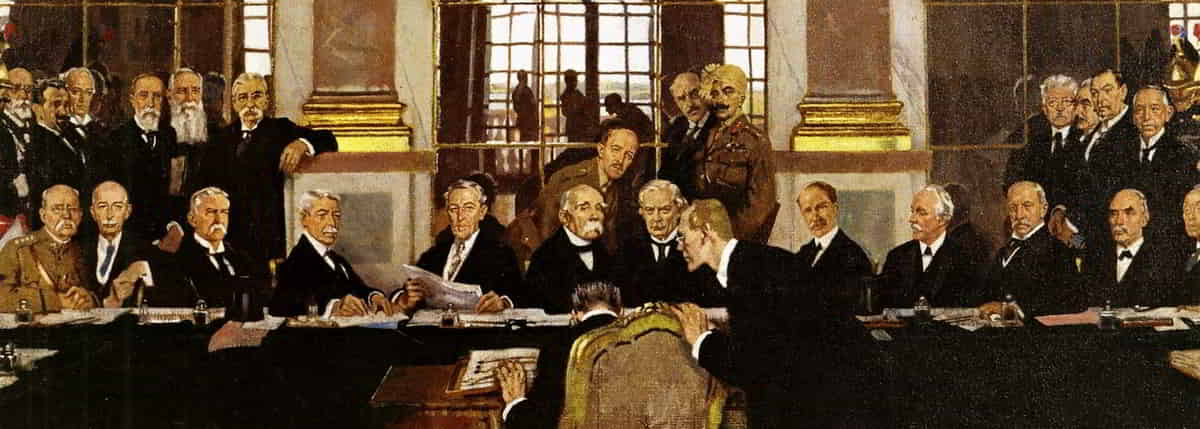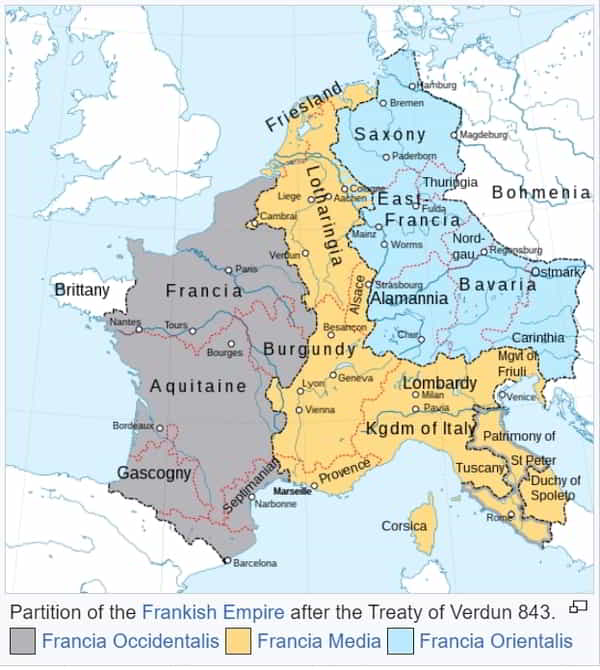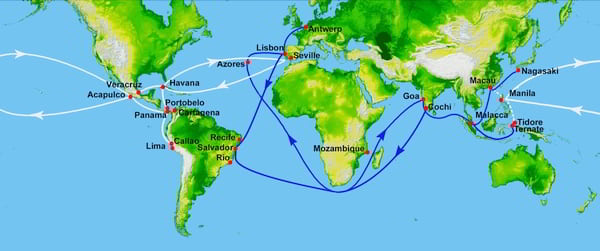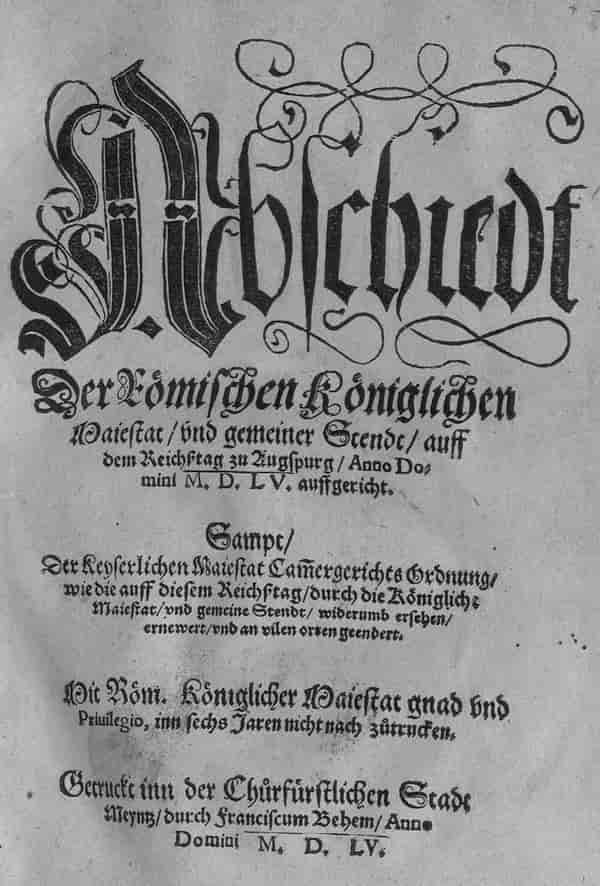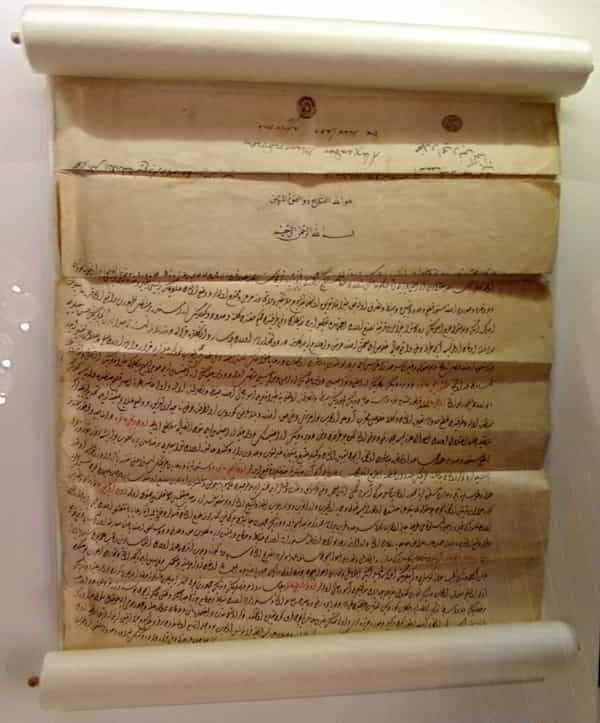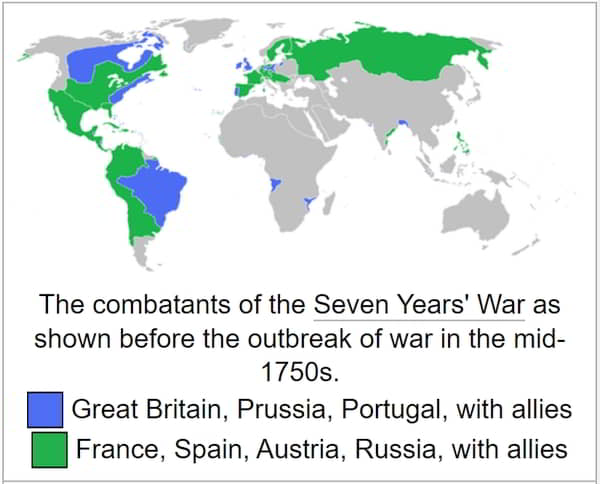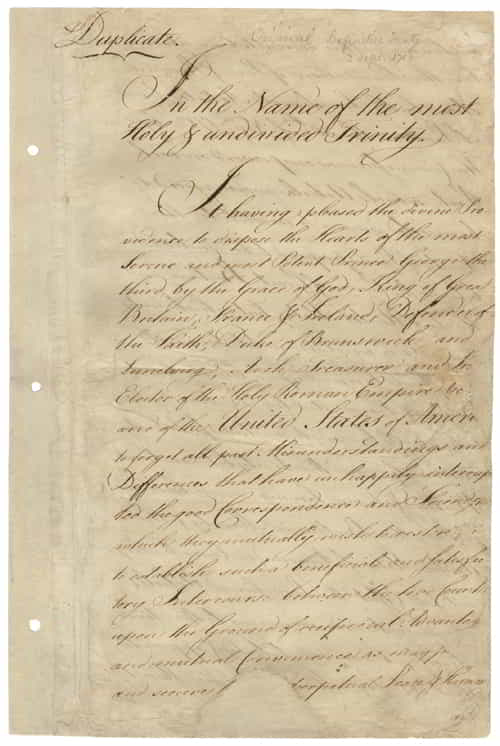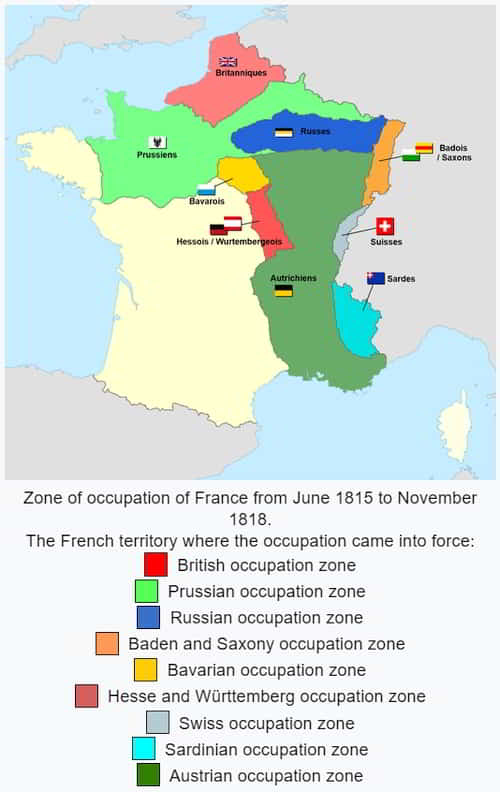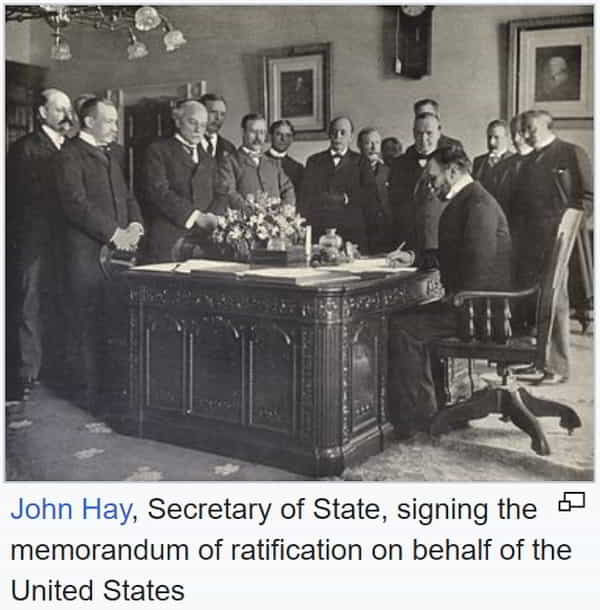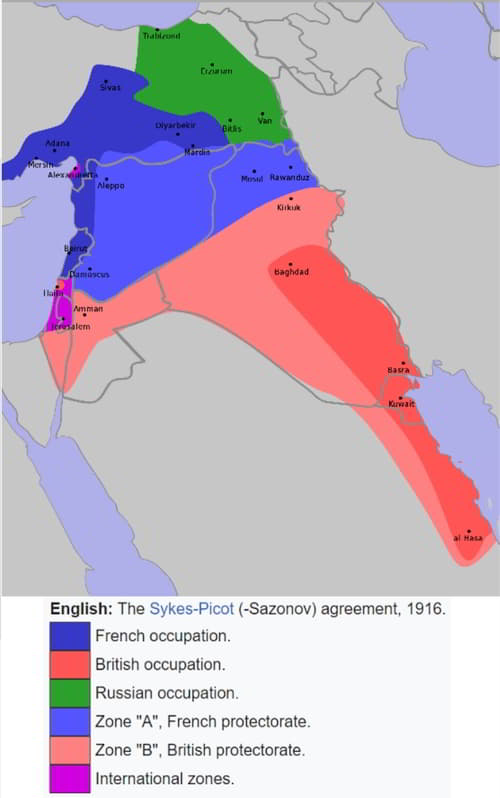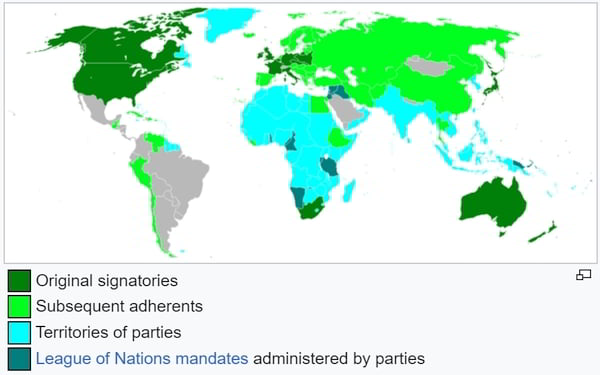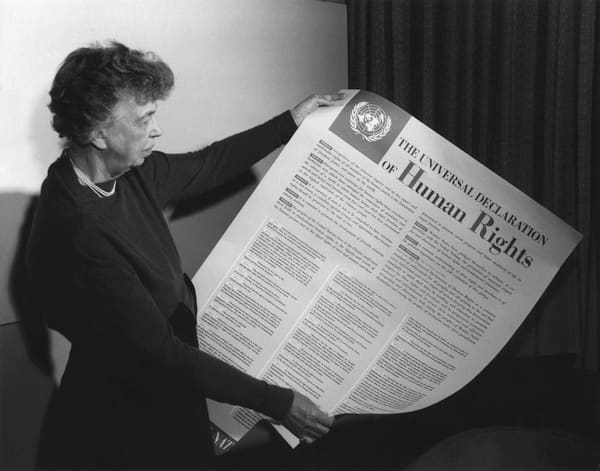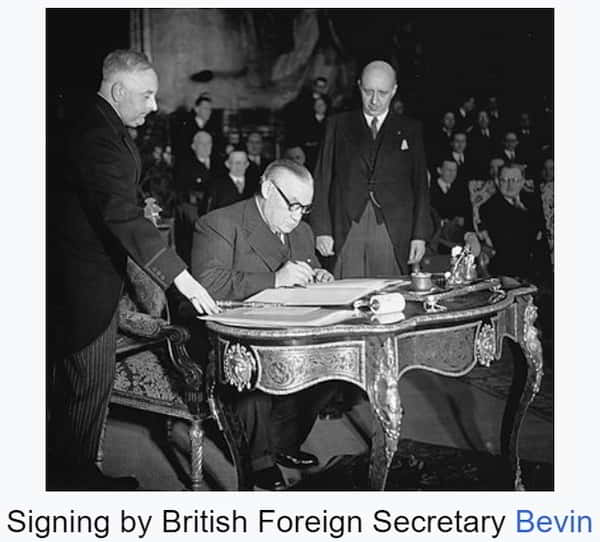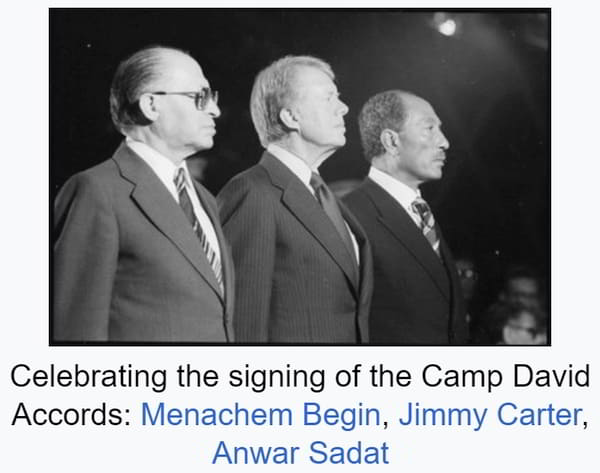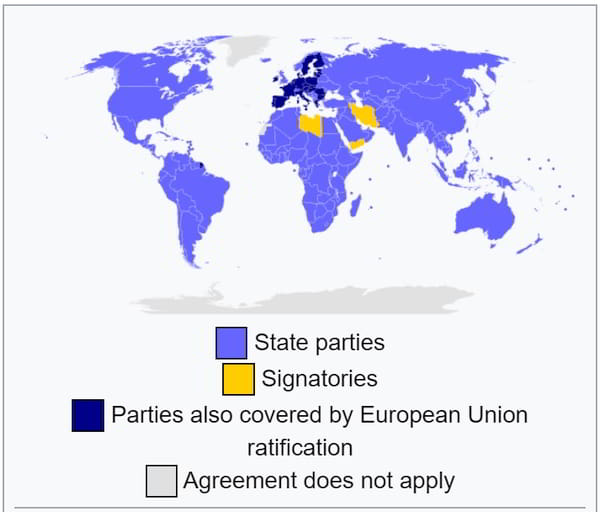Here are the 21 most historic Peace Treaties, Agreements and Contracts that led to peace, understanding, and stability among countries or sovereign entities. These important benchmarks in world history and geopolitical developments spanning many centuries were significant in ending wars or establishing international harmony and cooperation, such as the Treaty of Versailles, Kellogg-Briand Pact, United Nations Charter, and Camp David Accords. However, some had the opposite effect, such as the Treaty of Versailles. A multiple choice test with an answer key is given at the end.
21 Historic Peace Treaties, Agreements and Contracts in this article:
- Treaty of Verdun (843 CE)
- Magna Carta (1215 CE)
- Treaty of Tordesillas (1494 CE)
- Peace of Augsburg (1555 CE)
- Peace of Westphalia (1648 CE)
- Treaty of Karlowitz (1699)
- Treaty of Paris (1763 CE)
- Treaty of Paris (1783 CE)
- Louisiana Purchase (1803 CE)
- Napoleonic Code (1804 CE)
- Treaty of Paris (1815 CE)
- Treaty of Fort Laramie (1868 CE)
- Treaty of Paris (1898)
- Sykes-Picot Agreement (1916)
- Treaty of Versailles (1919 CE)
- Kellogg-Briand Pact (1928)
- United Nations Charter (1945 CE)
- Universal Declaration of Human Rights (1948) CE
- Treaty of Brussels (1948)
- Camp David Accords (1978 CE)
- Paris Agreement (2015 CE)
- 1848 Revolutions in Europe
1. Treaty of Verdun (843 CE): The Treaty of Verdun, signed in August 843, divided the Frankish Empire into three kingdoms among the surviving sons of the emperor Louis I, the son and successor of Charlemagne. The pact was the first step in the breakup of Charlemagne’s empire and foretold the emergence of contemporary Western European countries. It allocated Francia Media to Lothair I, Francia Orientalis to Louis II, and Francia Occidentalis to Charles II, laying the foundations for the independent states of France and Germany.
2. Magna Carta (1215 CE): Under the prospect of civil war, King John of England signed and issued the Magna Carta, also known as the Great Charter, on June 15, 1215. It established that the sovereign was subject to the rule of law and documented the liberties held by “free men,” laying the foundation for individual rights in Anglo-American jurisprudence. The agreement was reached between King John and barons to limit the monarchy’s power, reserving rights for free men but not extending to serfs. The Magna Carta came to symbolize justice and liberty and its concepts formed the basis of America’s Declaration of Independence. Various democratic movements and significant figures, such as Winston Churchill and Nelson Mandela, have cited it. The Magna Carta was the first instrument to formally state that the monarch and his administration were not above the law. In summary, the Magna Carta was a pivotal document that curtailed the power of the English monarchy and laid the groundwork for individual rights and liberties.
3. Treaty of Tordesillas (1494 CE): The Treaty of Tordesillas, signed in 1494, was an agreement between Spain and Portugal to divide the newly discovered lands outside Europe. It aimed to settle conflicts over the lands newly discovered or explored by Christopher Columbus and other late 15th-century voyagers. The treaty established a line of demarcation 370 leagues west of the Cape Verde Islands, dividing the world into two spheres of influence. Spain was given exclusive rights to all newly discovered and undiscovered lands west of the line, while Portugal was given the same rights to the lands to the east of the line. This division significantly influenced the colonization of the Americas, with Spain focusing on the western territories and Portugal later claiming the coast of Brazil, which lay to the west of the demarcation line. The Treaty of Tordesillas was an important example of a rivalry that was resolved without hostilities through the demarcation of areas of influence by the Catholic Church.
4. Peace of Augsburg (1555 CE): The Diet of the Holy Roman Empire established the Peace of Augsburg in Augsburg on September 25, 1555, creating the first lasting legal framework for the coexistence of Lutheranism and Catholicism in Germany. It enabled sovereign princes to select between Lutheranism and Catholicism as the official religion of their territory and allowed citizens who disagreed with the ruler’s decision to go freely. Although it did not include provisions for other Protestant faiths, such as Calvinism, this agreement essentially ended the rivalry between the two factions.
5. Peace of Westphalia (1648 CE): The Peace of Westphalia, signed in 1648, brought an end to the Thirty Years’ War in the Holy Roman Empire and the Eighty Years’ War between Spain and the Dutch Republic, with Spain officially acknowledging the Dutch Republic’s independence. It introduced the principle of cuius regio, eius religio, allowing rulers to determine the religion of their territories. The treaties involved were the Peace of Münster and the Treaty of Osnabrück. The significance of the Peace of Westphalia lies in its role in ending protracted conflicts and establishing the basis for national self-determination. It also laid the groundwork for the modern state system and the concept of territorial sovereignty.
6. Treaty of Karlowitz (1699): The Treaty of Karlowitz, signed on January 26, 1699, marked the end of hostilities between the Ottoman Empire and the Holy League, which included Austria, Poland, Venice, and Russia. It resulted in the transfer of Transylvania and much of Hungary from Turkish control to Austrian rule, significantly reducing Turkish influence in east-central Europe and establishing the Habsburg monarchy as the dominant power in the region. This peace settlement concluded the Great Turkish War of 1683–1697 and was the first time the Ottomans were forced to conclude a war on European terms.
7. Treaty of Paris (1763 CE): The Treaty of Paris, signed on February 10, 1763, brought the Seven Years’ War between Great Britain and France, as well as their respective allies, to a conclusion. The pact was signed by delegates from Great Britain and Hanover on one side and France and Spain on the other. By the provisions of the treaty, France ceded to Britain all of North America’s continent east of the Mississippi, excluding New Orleans and its environs. This pact officially concluded the Seven Years’ War and ushered in a period of British supremacy outside of Europe.
8. Treaty of Paris (1783 CE): The Treaty of Paris concluded the American Revolutionary War, recognizing the independence of the United States from British rule and defining territorial boundaries in North America. The treaty, signed on September 3, 1783, officially ended the American Revolutionary War and recognized the Thirteen Colonies as an independent, sovereign nation. It set the boundaries between British North America and the United States, with the Mississippi River defined as the western border of the United States. The treaty also granted the U.S. significant western territory, allowing for American western expansion. The treaty was one of a series of treaties signed at Paris in 1783 that also established peace between Great Britain and the allied nations of France, Spain, and the Netherlands.
9. Louisiana Purchase (1803 CE): In 1803, the United States acquired the Louisiana Territory from France for $15 million, doubling the size of the young nation. This vast territory, spanning 827,000 square miles, extended from the Mississippi River to the Rocky Mountains and from the Gulf of Mexico to the Canadian border. The acquisition was crucial for the nation’s westward expansion, providing access to new international markets for American farm products and securing the vital port of New Orleans on the Mississippi River. The Louisiana Purchase set the stage for significant exploration, discovery, migration, and settlement, while also presenting challenges and conflicts. This historic event remains the largest land acquisition in United States history, shaping the course of the nation’s development.
10. Napoleonic Code (1804 CE): The Napoleonic Code, also known as the Civil Code of 1804, was a significant legal reform in France. It replaced the country’s patchwork of feudal laws with a uniform set of laws, emphasizing principles of liberty and equality. The code made laws written, accessible, and clear, influencing political reforms across Europe and beyond. Additionally, it was integrated with Islamic law in the Middle East after France occupied those nations during the Napoleonic Wars. The code was a major milestone in the abolition of the previous feudal legal system and influenced legal reforms in developing countries, especially in Latin America and the Middle East.
11. Treaty of Paris (1815 CE): The Treaty of Paris was signed after Napoleon’s defeat at the Battle of Waterloo. It aimed to restore stability in Europe by redrawing borders, redistributing territories, and imposing financial reparations on France, shaping the post-Napoleonic era. The treaty was signed on November 20, 1815, after the defeat and the second abdication of Napoleon Bonaparte. It had more punitive terms than the treaty of the previous year, requiring France to pay 700 million francs in indemnities and reducing its borders to those that had existed on January 1, 1790. France was also required to pay additional money to cover the cost of providing additional support to the Allied armies. Additionally, France had to support an army of occupation of 150,000 men on its soil for three to five years.
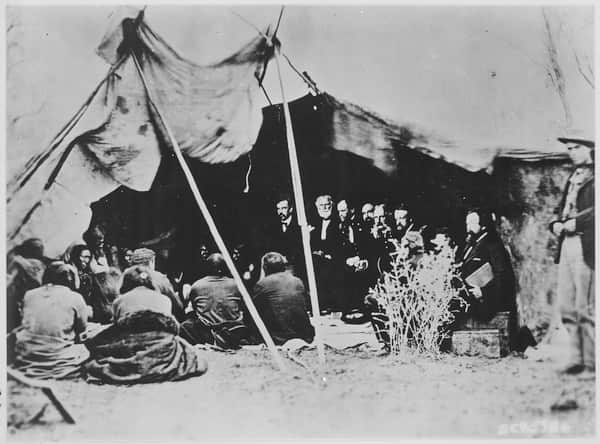
12. Treaty of Fort Laramie (1868 CE): The Treaty of Fort Laramie, signed on April 29, 1868, between the U.S. Government and the Sioux Nation, was a significant agreement that established the Black Hills as the Great Sioux Reservation. It declared that this region, along with others in South Dakota, Wyoming, and Nebraska were stated to be “unceded Indian Territory”, and for the exclusive use of the Sioux people. However, the discovery of gold in the Black Hills led to the U.S. government breaking the treaty and forcibly moving the tribes to smaller lands. The 1980 Supreme Court ruling found the U.S. government’s actions illegal, but the Sioux Nation declined a more than $100 million reparations offer, insisting that the territory was not for sale. This treaty remains at the center of a land dispute, questioning the meaning of international agreements and the rights of adjudication when they break down.
13. Treaty of Paris, (1898 CE): The Treaty of Paris, signed on December 10, 1898, brought the Spanish-American War to a close. It was signed in Paris by delegates from Spain and the United States. The agreement required Spain to give up Cuba and surrender Puerto Rico, Guam, and the Philippines to the United States. The US also occupied Manila until the fate of the Philippines was resolved. The treaty effectively ended the Spanish Empire and resulted in the United States becoming a global power.
14. Sykes-Picot Agreement (1916): The Sykes-Picot Agreement was a secret treaty made during World War I between the United Kingdom and France, with the assent of the Russian Empire, to define their mutually agreed areas of power and control in an eventual division of the Ottoman Empire. The agreement, signed in May 1916, led to the division of Turkish-held Syria, Iraq, Lebanon, and Palestine into various French- and British-administered areas. The agreement was one of a series of secret agreements founded on the assumption that the Triple Entente would destroy the Ottoman Empire during World War I and partition its territory. The Sykes-Picot Agreement, also known as the 1916 Asia Minor Agreement, was a significant factor in the post-war partition of the Middle East and has had a lasting impact on the region’s geopolitics.
15. Treaty of Versailles (1919 CE): The Treaty of Versailles, signed on June 28, 1919, formally ended World War I and imposed severe penalties on Germany. It required Germany to surrender approximately 10 percent of its prewar territory in Europe and all of its overseas possessions. The pact also required Germany to give up colonies in Africa, Asia, and the Pacific, transfer territory to other countries, including France and Poland, limit the strength of its military, pay war reparations to the Allied countries, and accept guilt for the war. These harsh conditions contributed to geopolitical tensions and, along with other factors, laid the groundwork for World War II. The treaty’s most controversial provisions included the “war guilt” clause, the territorial losses, and the significant reparation payments.
16. Kellogg-Briand Pact (1928 CE): The Kellogg-Briand Pact, formally known as the General Treaty for Renunciation of War as an Instrument of National Policy, was a multilateral accord reached on August 27, 1928, with the goal of abolishing war as a tool of national policy. It was the most ambitious of post-World War I peacekeeping attempts and was the outcome of multiple nations’ measures to avoid another global war. Virtually all of the world’s countries ultimately agreed to it. The basic agreement had two articles: the first prohibited the use of war as a tool of national policy, and the second urged members to resolve their conflicts peacefully. The agreement in the end had little influence in halting the rise of militarism in the 1930s or avoiding World War II. It did, however, help popularize the notion that aggressive and preemptive military intervention was detrimental. The Kellogg-Briand Pact’s objectives were eventually mirrored in the formation of the United Nations in 1945.
17. United Nations Charter (1945 CE): The UN Charter is the foundational treaty of the United Nations, establishing its purposes, governing structure, and overall framework, including its six principal organs. It mandates the UN and its member states to maintain international peace and security, uphold international law, achieve higher standards of living, address economic, social, health, and related problems, and promote universal respect for human rights and fundamental freedoms. Drafted during the San Francisco Conference in 1945, it was unanimously adopted by delegates and opened for signature on 26 June 1945. The Charter is an instrument of international law, and UN Member States are bound by it.
18. Universal Declaration of Human Rights (1948): The Universal Declaration of Human Rights was created to prevent a recurrence of the atrocities of World War II. Adopted by the United Nations in December 1948, this landmark agreement changed the course of modern diplomacy and conflict resolution by establishing universal protections for human rights, freedom, equality, and dignity. It includes the presumption of innocence, the right to free speech, asylum, and freedom from torture, among other 30 rights and freedoms that Eleanor Roosevelt fought for. The declaration remains a living document and is the most translated document in the world. Following discussions and drafting from 1946 to 1948, the United Nations General Assembly adopted it.
19. Treaty of Brussels (1948): The Treaty of Brussels, signed in 1948 by Britain, France, Belgium, the Netherlands, and Luxembourg, was an agreement creating an alliance for shared defense. It contributed to the establishment of NATO and the Western European Union. The treaty provided for the organization of military, economic, social, and cultural cooperation among the member states, as well as a mutual defense clause. The primary aim of the treaty was to create a pact of mutual assistance to counter the risk of Soviet expansion. The treaty was a foundational step in the establishment of NATO, which was officially formed in 1949 with the signing of the North Atlantic Treaty, also known as the Washington Treaty.
20. Camp David Accords (1978 CE): In 1978, the Camp David Accords were signed by Egyptian President Anwar Sadat and Israeli Prime Minister Menachem Begin, following secret negotiations brokered by the United States. The accords aimed to resolve the conflict between Jews and Arabs in the Middle East from the Jordan River to the Mediterranean Sea. It led to peace between Egypt and Israel and was a historic step in Middle East diplomacy, normalizing relations and securing regional stability. This historic agreement was the first peace deal reached between Israel and one of its Arab neighbors, and as a result of their efforts, Sadat and Begin were both awarded the Nobel Peace Prize in 1978. Tragically, Sadat was assassinated in 1981 by Islamic extremists, in part due to his involvement in the landmark pact.
21. Paris Agreement (2015 CE): The Paris Agreement, a historic treaty established in 2015, is a legally binding international accord aimed at addressing climate change. It was endorsed at the UN Climate Change Conference (COP21) by 196 Parties. The agreement’s primary objective is to strengthen the global response to the threat of climate change by limiting the global temperature rise to the ambitious objective of 1.5 degrees Celsius above levels prior to industrialization. It requires all participating countries to set emissions-reduction pledges, known as nationally determined contributions (NDCs), and work towards sustainable practices to combat environmental threats.
1848 Revolutions in Europe: The 1848 revolutions in Europe led to across Europe, they did not result in a single, overarching treaty, but they did result in various agreements and significant political and social changes across different countries. The outcomes varied by country and region, shaping the course of European history in the years that followed:
- France: The 1848 revolution in France led to the establishment of the French Second Republic and the adoption of a new constitution. However, the revolution did not immediately result in a formal treaty.
- German States: The revolutions in the German states led to the Frankfurt Assembly, which attempted to create a unified German state. Although the assembly’s efforts ultimately failed, the events of 1848 had a significant impact on the future unification of Germany.
- Austria: The revolutions in the Austrian Empire led to the resignation of Metternich and the granting of a constitution. However, the revolution was eventually suppressed by the Austrian government.
- Other Countries: The 1848 revolutions also had impacts on other European countries, such as Italy and the Habsburg Empire, leading to various reforms and changes, but not necessarily formal treaties.
Conclusion
These treaties, agreements, and contracts have played a significant role in shaping our world, from governance to daily interactions, and they continue to influence our history and future. They serve to bind parties to their word, promote accountability, and provide a framework for addressing breaches. The value of these legal instruments lies in their ability to formalize important international commitments and provide a basis for enforcement, thereby contributing to the stability and predictability of human and government interactions.
Multiple Choice Test on 20 Most Historic Peace Treaties, Agreements and Contracts
Instructions: Choose the best answer for each question. Answer key follows the test.
1. What treaty aimed to resolve conflicts over newly discovered lands, dividing the world into Spanish and Portuguese spheres of influence?
- a. Treaty of Paris (1783) b. Treaty of Verdun (843 CE) c. Treaty of Tordesillas (1494 CE) d. Treaty of Karlowitz (1699)
2. The Treaty of Paris in 1783 recognized the independence of the United States from British rule. What was the significant western border defined by this treaty?
- a. Mississippi River b. Rocky Mountains c. Great Sioux Reservation d. Black Hills
3. Which treaty ended the Thirty Years’ War and the Eighty Years’ War, introducing the principle of cuius regio, eius religio?
- a. Peace of Augsburg (1555 CE) b. Treaty of Verdun (843 CE) c. Paris Agreement (2015 CE) d. Peace of Westphalia (1648 CE)
4. The Treaty of Karlowitz in 1699 transferred Transylvania and much of Hungary from Ottoman to Austrian control, diminishing Turkish influence in which region?
- a. East Asia b. East-central Europe c. Middle East d. North America
5. The Treaty of Paris in 1763 concluded which war, resulting in France ceding its North American territories east of the Mississippi to Britain?
- a. American Revolutionary War b. Seven Years’ War c. Spanish-American War d. World War I
6. The Magna Carta, signed in 1215, laid the foundation for individual rights and became a symbol of justice. In which country was it signed?
- a. France b. England c. Spain d. Ottoman Empire
7. What historic event resulted from the United States’ acquisition of the Louisiana Territory from France in 1803 for $15 million?
- a. American Revolutionary War b. Spanish-American War c. American Civil War d. Napoleonic Wars
8. The Universal Declaration of Human Rights, adopted in 1948, was a response to the atrocities of which global conflict?
- a. World War I b. World War II c. Cold War d. Vietnam War
9. The Treaty of Fort Laramie in 1868 established the Black Hills as the Great Sioux Reservation. What factors led to treaty violations?
- a. Gold discovery b. Oil discovery c. Religious conflicts d. Cultural exchange
10. The Kellogg-Briand Pact, signed in 1928, aimed to eliminate war as a tool of national policy. What impact did it have on preventing militarism?
- a. Prevented militarism b. Led to World War II c. Popularized aggressive military intervention d. Established NATO
11. The Treaty of Paris in 1898 concluded which war, resulting in Spain ceding Cuba and surrendering Puerto Rico, Guam, and the Philippines to the United States?
- a. American Revolutionary War b. Napoleonic Wars c. Spanish-American War d. World War I
12. The Treaty of Verdun in 843 divided the Frankish Empire into three kingdoms among the sons of Emperor Louis I. Which two modern countries emerged from this division?
- a. France and Germany b. Italy and Spain c. England and Scotland d. Netherlands and Belgium
13. The Sykes-Picot Agreement in 1916 divided the Ottoman Empire’s territories between which two countries during World War I?
- a. United States and Canada b. United Kingdom and France c. Germany and Austria-Hungary d. Russia and Japan
14. The Napoleonic Code, established in 1804, replaced France’s feudal laws with a uniform legal system emphasizing what principles?
- a. Feudalism and serfdom b. Liberty and equality c. Monarchy and aristocracy d. Communism and socialism
15. The Paris Agreement, established in 2015, is a legally binding international treaty addressing what global issue?
- a. Human rights b. Climate change c. Nuclear proliferation d. International trade
16. In 1978, the Camp David Accords normalized relations between which two nations in the Middle East?
- a. Iraq and Iran b. Egypt and Israel c. Saudi Arabia and Yemen d. Syria and Lebanon
17. The Treaty of Versailles, signed in 1919, formally ended which global conflict and imposed severe penalties on Germany?
- a. World War I b. World War II c. Napoleonic Wars d. Cold War
18. The Treaty of Paris in 1815, signed after Napoleon’s defeat at Waterloo, aimed to restore stability in Europe by doing what?
- a. Expanding French territory b. Redrawing borders c. Establishing the United Nations d. Abolishing feudal legal systems
19. The Brussels Treaty, signed in 1948, aimed at mutual defense against the risk of Soviet expansion, contributing to the establishment of what alliance?
- a. Warsaw Pact b. NATO c. SEATO d. CENTO
20. The Peace of Augsburg, established in 1555, allowed sovereign princes in the Holy Roman Empire to choose between which two religions as the official religion of their territories?
- a. Judaism and Islam b. Buddhism and Hinduism c. Lutheranism and Catholicism d. Shinto and Confucianism
21. The Treaty of Tordesillas, signed in 1494, aimed to resolve conflicts over newly discovered lands between which two countries?
- a. France and Spain b. England and Portugal c. Spain and Portugal d. Italy and the Ottoman Empire
22.The Treaty of Paris in 1783 concluded the independence of which country from British rule?
- a. Canada b. Australia c. United States d. India
23. Which treaty ended the Thirty Years’ War and introduced the principle of cuius regio, eius religio?
- a. Treaty of Westphalia b. Treaty of Augsburg c. Treaty of Verdun d. Treaty of Paris
24. The Treaty of Karlowitz in 1699 transferred territories from the Ottoman Empire to which other power?
- a. France b. Austria c. Russia d. Spain
25. The Treaty of Paris in 1763 concluded which war and resulted in France ceding its North American territories to Britain?
- a. American Revolutionary War b. Seven Years’ War c. Napoleonic Wars d. Spanish-American War
26. The Magna Carta, signed in 1215, established the principle that the sovereign was subject to what?
- a. Rule of law b. Divine right c. Military rule d. Feudal law
27. The United States acquired the Louisiana Territory from which country in 1803?
- a. France b. Spain c. England d. Netherlands
28. The Universal Declaration of Human Rights, adopted in 1948, was a response to the atrocities of which global conflict?
- a. World War I b. World War II c. Cold War d. Korean War
29. The Treaty of Fort Laramie in 1868 established the Black Hills as the Great Sioux Reservation. What resource discovery led to treaty violations?
- a. Gold b. Oil c. Coal d. Silver
30. The Kellogg-Briand Pact, signed in 1928, aimed to eliminate what as a tool of national policy?
- a. Economic sanctions b. War c. Diplomacy d. Territorial disputes
Answer Key
- c. Treaty of Tordesillas (1494 CE)
- a. Mississippi River
- d. Peace of Westphalia (1648 CE)
- b. East-central Europe
- b. Seven Years’ War
- b. England
- d. Napoleonic Wars
- b. World War II
- a. Gold discovery
- c. Popularized aggressive military intervention
- c. Spanish-American War
- a. France and Germany
- b. United Kingdom and France
- b. Liberty and equality
- b. Climate change
- b. Egypt and Israel
- a. World War I
- b. Redrawing borders
- b. NATO
- c. Lutheranism and Catholicism
- c. Spain and Portugal
- c. United States
- a. Treaty of Westphalia
- b. Austria
- b. Seven Years’ War
- a. Rule of law
- a. France
- b. World War II
- a. Gold
- b. War
– love learning -your best ed lessons guide, Scott

